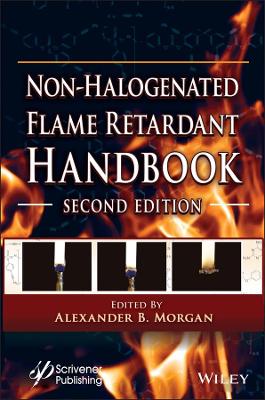Construction Risk Management Decision Making
 -15%
portes grátis
-15%
portes grátis
Construction Risk Management Decision Making
Understanding Current Practices
Arthur, Alex C.
John Wiley and Sons Ltd
01/2022
432
Dura
Inglês
9781119693000
15 a 20 dias
884
Descrição não disponível.
Preface xi
Acknowledgement xiii
About the Author xv
1 Introduction - A Risk Management Approach to Construction Project Delivery 1
1.1 Risk Perception Categorisation 3
1.1.1 Differences in Personality Traits 3
1.1.2 Prospect Theory 3
1.1.3 Differences Between External Stakeholders and Project Team Members 4
1.1.4 Culture Theory 4
1.2 Construction Risk Data Presentation Formats 4
Part 1 Concepts 5
Overview of the Concept Chapters 7
2 Systems Analysis of the Construction Industry and Project Delivery 9
2.1 Introduction 9
2.2 The Construction Industry 10
2.3 The Construction Industry System 10
2.3.1 Open and Closed Systems 11
2.3.2 Construction System Objective 12
2.3.3 Construction System's Components and Decomposition 13
2.4 Construction Delivery System 14
2.5 The Construction Project Management System; Differentiation and Risk 17
2.5.1 Systems Differentiation 17
2.5.1.1 Evolution of Specialist Construction Disciplines 21
2.5.1.2 Isolated Training Programmes for the Different Specialist Disciplines 22
2.5.1.3 Project Team Members from Different Organisations and Internal Subgroups 22
2.5.1.4 Differences in Personal Objectives of Project Team Members 23
2.5.1.5 Environmental Changes 23
2.5.2 The Link Between Differentiation and Risk 24
2.5.2.1 Consolidated Differentiated Specialist Groupings 24
2.5.2.2 Failure to Integrate Objectives of Additional Differentiated Specialist Roles 24
2.5.2.3 Sudden and Prolonged Environmental Changes 24
2.6 Construction System's Environment and Risk 25
2.6.1 Political Functional Subsystem 26
2.6.2 Economic Functional Subsystem 26
2.6.3 Socio-cultural Functional Subsystem 27
2.6.4 Technological Functional Subsystem 27
2.6.5 Ecological Functional Subsystem 27
2.6.6 Legal Functional Subsystem 28
2.7 Summary 28
3 The Concept of Risk 31
3.1 Introduction 31
3.2 Risk Conceptualisation 31
3.3 Risk Etymology 32
3.4 Risk Conceptual Interpretations 33
3.4.1 Realist Interpretation 33
3.4.2 Psychometric Viewpoint 34
3.4.3 Sociological Interpretation 35
3.4.4 Real and Socially Constructed Viewpoint 36
3.4.5 Edgework Viewpoint 36
3.5 Psychometric and Sociological Risk Perspective Application in This Book 36
3.6 Summary 38
4 Construction Risk Management 41
4.1 Introduction 41
4.2 Changing Perspectives on Organisational Risk Management Strategies 42
4.3 The Construction Risk Management Process 43
4.3.1 Risk Identification Subsystem 44
4.3.2 Risk Analysis Sub-system 44
4.3.3 Risk Response Sub-system 45
4.3.4 Risk Review Sub-system 45
4.4 Construction Risk Management Approaches 46
4.5 Summary 49
5 Construction Risk Management Decision-Making 51
5.1 Introduction 51
5.2 The Two Systems of Thinking and Decision-Making 52
5.2.1 Quick Decision-Making 53
5.2.2 Gradual Decision-Making 54
5.3 The Psychology of Perception 55
5.3.1 Risk Perception 56
5.3.2 Formation of Risk Perceptions 57
5.3.3 Impact of Affective Heuristics on Cognitive Reasoning 59
5.3.4 Construction Risk Data Presentation Formats and Affective Heuristics 60
5.4 Risk Management Decision Making Under Intuition 61
5.5 Differentiated Risk Perceptions and Intuitive Construction Risk Management Practices 64
5.6 Summary 68
Summary of the Part 1 71
Part 2 Case Studies 75
Overview of the Part 2 77
6 Research Proposal, Methodology, and Design 81
6.1 Introduction 81
6.2 Research Proposal 81
6.2.1 Research Propositions 84
6.2.1.1 Proposition 1 84
6.2.1.2 Proposition 2 84
6.2.1.3 Proposition 3 85
6.3 Research Philosophical Traditions, Axioms, and Methodology 85
6.3.1 Phase 1: The Researcher's Philosophical Stance 86
6.3.2 Phase 2: Research Theoretical Perspectives 86
6.3.3 Phase 3: Research Investigative Strategies 86
6.3.4 Phase 4: Methods of Data Collection and Analysis 87
6.3.5 Phase 5: Demonstrating Quality of the Empirical Evidence 88
6.4 Summary 88
7 Data Presentation 89
7.1 Introduction 89
7.2 Case Study Project 1 89
7.2.1 Case Study 1 Participants 90
7.2.2 Case Study 1 Findings 91
7.2.2.1 Case 1- Research Proposition 1: Findings 91
7.2.2.2 Case 1- Research Proposition 2: Findings 102
7.2.2.3 Case 1- Research Proposition 3: Findings 124
7.2.2.4 Summary of Case 1 Findings 146
7.3 Case Study Project 2 147
7.3.1 Case Study 2 Participants 147
7.3.2 Case Study 2 Findings 147
7.4 Case Study Project 3 150
7.4.1 Case Study 3 Participants 151
7.4.2 Case Study 3 Findings 153
7.5 Case Study Project 4 154
7.5.1 Case Study 4 Participants 154
7.5.2 Case Study 4 Findings 155
7.6 Summary 158
8 Application 161
8.1 Introduction 161
8.2 Research Proposition 1: Discussions 161
8.2.1 Risk Perception Categorisation on the Typical Construction Project Risk Events at the Different Project Delivery Phases 162
8.2.1.1 Pre-construction Phase 162
8.2.1.2 Construction Phase 163
8.2.2 Risk Perception Categorisation on the Typical Construction Project Risk Events Under Different Project Settings 164
8.3 Research Proposition 2: Discussions 169
8.3.1 Intuitive Risk Management Decision Processing from 'Grounded' Heuristics 169
8.3.2 Susceptibility of Intuitive Decision Processing to Manipulation 173
8.3.3 Psychological Difficulties in Intuitive Risk Identification of Events Outside the Scope of a Specialist Role 173
8.4 Research Proposition 3: Findings 179
8.4.1 Two Strands of Intuitive Construction Risk Management Systems 180
8.4.2 Theoretically Incompatible Risk Management Practices 184
8.4.3 Intuitive Processing of Statistics and Probability Data 186
8.4.4 Comparative Analysis of Intuitive Processing of Quantitative Risk Assessment Versus Qualitative Risk Assessment 189
8.4.5 Intuitive Processing of Probability Predictions of Emotive Events 192
8.5 Summary 196
8.5.1 Research Proposition 1 196
8.5.2 Research Proposition 2 197
8.5.3 Research Proposition 3 198
9 Conclusions 201
9.1 Summary 201
9.1.1 Research Proposition 1 202
9.1.2 Research Proposition 2 203
9.1.3 Research Proposition 3 204
9.2 Rethinking Construction Risk Management Practices 205
Appendix A Research Design - Theory, Methodology, and Field Questions 207
Appendix B Case 2 Data Presentation 225
Appendix c Case 3 Data Presentation 279
Appendix d Case 4 Data Presentation 335
References 391
Index 401
Acknowledgement xiii
About the Author xv
1 Introduction - A Risk Management Approach to Construction Project Delivery 1
1.1 Risk Perception Categorisation 3
1.1.1 Differences in Personality Traits 3
1.1.2 Prospect Theory 3
1.1.3 Differences Between External Stakeholders and Project Team Members 4
1.1.4 Culture Theory 4
1.2 Construction Risk Data Presentation Formats 4
Part 1 Concepts 5
Overview of the Concept Chapters 7
2 Systems Analysis of the Construction Industry and Project Delivery 9
2.1 Introduction 9
2.2 The Construction Industry 10
2.3 The Construction Industry System 10
2.3.1 Open and Closed Systems 11
2.3.2 Construction System Objective 12
2.3.3 Construction System's Components and Decomposition 13
2.4 Construction Delivery System 14
2.5 The Construction Project Management System; Differentiation and Risk 17
2.5.1 Systems Differentiation 17
2.5.1.1 Evolution of Specialist Construction Disciplines 21
2.5.1.2 Isolated Training Programmes for the Different Specialist Disciplines 22
2.5.1.3 Project Team Members from Different Organisations and Internal Subgroups 22
2.5.1.4 Differences in Personal Objectives of Project Team Members 23
2.5.1.5 Environmental Changes 23
2.5.2 The Link Between Differentiation and Risk 24
2.5.2.1 Consolidated Differentiated Specialist Groupings 24
2.5.2.2 Failure to Integrate Objectives of Additional Differentiated Specialist Roles 24
2.5.2.3 Sudden and Prolonged Environmental Changes 24
2.6 Construction System's Environment and Risk 25
2.6.1 Political Functional Subsystem 26
2.6.2 Economic Functional Subsystem 26
2.6.3 Socio-cultural Functional Subsystem 27
2.6.4 Technological Functional Subsystem 27
2.6.5 Ecological Functional Subsystem 27
2.6.6 Legal Functional Subsystem 28
2.7 Summary 28
3 The Concept of Risk 31
3.1 Introduction 31
3.2 Risk Conceptualisation 31
3.3 Risk Etymology 32
3.4 Risk Conceptual Interpretations 33
3.4.1 Realist Interpretation 33
3.4.2 Psychometric Viewpoint 34
3.4.3 Sociological Interpretation 35
3.4.4 Real and Socially Constructed Viewpoint 36
3.4.5 Edgework Viewpoint 36
3.5 Psychometric and Sociological Risk Perspective Application in This Book 36
3.6 Summary 38
4 Construction Risk Management 41
4.1 Introduction 41
4.2 Changing Perspectives on Organisational Risk Management Strategies 42
4.3 The Construction Risk Management Process 43
4.3.1 Risk Identification Subsystem 44
4.3.2 Risk Analysis Sub-system 44
4.3.3 Risk Response Sub-system 45
4.3.4 Risk Review Sub-system 45
4.4 Construction Risk Management Approaches 46
4.5 Summary 49
5 Construction Risk Management Decision-Making 51
5.1 Introduction 51
5.2 The Two Systems of Thinking and Decision-Making 52
5.2.1 Quick Decision-Making 53
5.2.2 Gradual Decision-Making 54
5.3 The Psychology of Perception 55
5.3.1 Risk Perception 56
5.3.2 Formation of Risk Perceptions 57
5.3.3 Impact of Affective Heuristics on Cognitive Reasoning 59
5.3.4 Construction Risk Data Presentation Formats and Affective Heuristics 60
5.4 Risk Management Decision Making Under Intuition 61
5.5 Differentiated Risk Perceptions and Intuitive Construction Risk Management Practices 64
5.6 Summary 68
Summary of the Part 1 71
Part 2 Case Studies 75
Overview of the Part 2 77
6 Research Proposal, Methodology, and Design 81
6.1 Introduction 81
6.2 Research Proposal 81
6.2.1 Research Propositions 84
6.2.1.1 Proposition 1 84
6.2.1.2 Proposition 2 84
6.2.1.3 Proposition 3 85
6.3 Research Philosophical Traditions, Axioms, and Methodology 85
6.3.1 Phase 1: The Researcher's Philosophical Stance 86
6.3.2 Phase 2: Research Theoretical Perspectives 86
6.3.3 Phase 3: Research Investigative Strategies 86
6.3.4 Phase 4: Methods of Data Collection and Analysis 87
6.3.5 Phase 5: Demonstrating Quality of the Empirical Evidence 88
6.4 Summary 88
7 Data Presentation 89
7.1 Introduction 89
7.2 Case Study Project 1 89
7.2.1 Case Study 1 Participants 90
7.2.2 Case Study 1 Findings 91
7.2.2.1 Case 1- Research Proposition 1: Findings 91
7.2.2.2 Case 1- Research Proposition 2: Findings 102
7.2.2.3 Case 1- Research Proposition 3: Findings 124
7.2.2.4 Summary of Case 1 Findings 146
7.3 Case Study Project 2 147
7.3.1 Case Study 2 Participants 147
7.3.2 Case Study 2 Findings 147
7.4 Case Study Project 3 150
7.4.1 Case Study 3 Participants 151
7.4.2 Case Study 3 Findings 153
7.5 Case Study Project 4 154
7.5.1 Case Study 4 Participants 154
7.5.2 Case Study 4 Findings 155
7.6 Summary 158
8 Application 161
8.1 Introduction 161
8.2 Research Proposition 1: Discussions 161
8.2.1 Risk Perception Categorisation on the Typical Construction Project Risk Events at the Different Project Delivery Phases 162
8.2.1.1 Pre-construction Phase 162
8.2.1.2 Construction Phase 163
8.2.2 Risk Perception Categorisation on the Typical Construction Project Risk Events Under Different Project Settings 164
8.3 Research Proposition 2: Discussions 169
8.3.1 Intuitive Risk Management Decision Processing from 'Grounded' Heuristics 169
8.3.2 Susceptibility of Intuitive Decision Processing to Manipulation 173
8.3.3 Psychological Difficulties in Intuitive Risk Identification of Events Outside the Scope of a Specialist Role 173
8.4 Research Proposition 3: Findings 179
8.4.1 Two Strands of Intuitive Construction Risk Management Systems 180
8.4.2 Theoretically Incompatible Risk Management Practices 184
8.4.3 Intuitive Processing of Statistics and Probability Data 186
8.4.4 Comparative Analysis of Intuitive Processing of Quantitative Risk Assessment Versus Qualitative Risk Assessment 189
8.4.5 Intuitive Processing of Probability Predictions of Emotive Events 192
8.5 Summary 196
8.5.1 Research Proposition 1 196
8.5.2 Research Proposition 2 197
8.5.3 Research Proposition 3 198
9 Conclusions 201
9.1 Summary 201
9.1.1 Research Proposition 1 202
9.1.2 Research Proposition 2 203
9.1.3 Research Proposition 3 204
9.2 Rethinking Construction Risk Management Practices 205
Appendix A Research Design - Theory, Methodology, and Field Questions 207
Appendix B Case 2 Data Presentation 225
Appendix c Case 3 Data Presentation 279
Appendix d Case 4 Data Presentation 335
References 391
Index 401
Este título pertence ao(s) assunto(s) indicados(s). Para ver outros títulos clique no assunto desejado.
construction risk management; construction risk management guide; qualitative construction risk management; construction risk management behavioral science; construction risk management systems thinking; construction risk qualitative decision making
Preface xi
Acknowledgement xiii
About the Author xv
1 Introduction - A Risk Management Approach to Construction Project Delivery 1
1.1 Risk Perception Categorisation 3
1.1.1 Differences in Personality Traits 3
1.1.2 Prospect Theory 3
1.1.3 Differences Between External Stakeholders and Project Team Members 4
1.1.4 Culture Theory 4
1.2 Construction Risk Data Presentation Formats 4
Part 1 Concepts 5
Overview of the Concept Chapters 7
2 Systems Analysis of the Construction Industry and Project Delivery 9
2.1 Introduction 9
2.2 The Construction Industry 10
2.3 The Construction Industry System 10
2.3.1 Open and Closed Systems 11
2.3.2 Construction System Objective 12
2.3.3 Construction System's Components and Decomposition 13
2.4 Construction Delivery System 14
2.5 The Construction Project Management System; Differentiation and Risk 17
2.5.1 Systems Differentiation 17
2.5.1.1 Evolution of Specialist Construction Disciplines 21
2.5.1.2 Isolated Training Programmes for the Different Specialist Disciplines 22
2.5.1.3 Project Team Members from Different Organisations and Internal Subgroups 22
2.5.1.4 Differences in Personal Objectives of Project Team Members 23
2.5.1.5 Environmental Changes 23
2.5.2 The Link Between Differentiation and Risk 24
2.5.2.1 Consolidated Differentiated Specialist Groupings 24
2.5.2.2 Failure to Integrate Objectives of Additional Differentiated Specialist Roles 24
2.5.2.3 Sudden and Prolonged Environmental Changes 24
2.6 Construction System's Environment and Risk 25
2.6.1 Political Functional Subsystem 26
2.6.2 Economic Functional Subsystem 26
2.6.3 Socio-cultural Functional Subsystem 27
2.6.4 Technological Functional Subsystem 27
2.6.5 Ecological Functional Subsystem 27
2.6.6 Legal Functional Subsystem 28
2.7 Summary 28
3 The Concept of Risk 31
3.1 Introduction 31
3.2 Risk Conceptualisation 31
3.3 Risk Etymology 32
3.4 Risk Conceptual Interpretations 33
3.4.1 Realist Interpretation 33
3.4.2 Psychometric Viewpoint 34
3.4.3 Sociological Interpretation 35
3.4.4 Real and Socially Constructed Viewpoint 36
3.4.5 Edgework Viewpoint 36
3.5 Psychometric and Sociological Risk Perspective Application in This Book 36
3.6 Summary 38
4 Construction Risk Management 41
4.1 Introduction 41
4.2 Changing Perspectives on Organisational Risk Management Strategies 42
4.3 The Construction Risk Management Process 43
4.3.1 Risk Identification Subsystem 44
4.3.2 Risk Analysis Sub-system 44
4.3.3 Risk Response Sub-system 45
4.3.4 Risk Review Sub-system 45
4.4 Construction Risk Management Approaches 46
4.5 Summary 49
5 Construction Risk Management Decision-Making 51
5.1 Introduction 51
5.2 The Two Systems of Thinking and Decision-Making 52
5.2.1 Quick Decision-Making 53
5.2.2 Gradual Decision-Making 54
5.3 The Psychology of Perception 55
5.3.1 Risk Perception 56
5.3.2 Formation of Risk Perceptions 57
5.3.3 Impact of Affective Heuristics on Cognitive Reasoning 59
5.3.4 Construction Risk Data Presentation Formats and Affective Heuristics 60
5.4 Risk Management Decision Making Under Intuition 61
5.5 Differentiated Risk Perceptions and Intuitive Construction Risk Management Practices 64
5.6 Summary 68
Summary of the Part 1 71
Part 2 Case Studies 75
Overview of the Part 2 77
6 Research Proposal, Methodology, and Design 81
6.1 Introduction 81
6.2 Research Proposal 81
6.2.1 Research Propositions 84
6.2.1.1 Proposition 1 84
6.2.1.2 Proposition 2 84
6.2.1.3 Proposition 3 85
6.3 Research Philosophical Traditions, Axioms, and Methodology 85
6.3.1 Phase 1: The Researcher's Philosophical Stance 86
6.3.2 Phase 2: Research Theoretical Perspectives 86
6.3.3 Phase 3: Research Investigative Strategies 86
6.3.4 Phase 4: Methods of Data Collection and Analysis 87
6.3.5 Phase 5: Demonstrating Quality of the Empirical Evidence 88
6.4 Summary 88
7 Data Presentation 89
7.1 Introduction 89
7.2 Case Study Project 1 89
7.2.1 Case Study 1 Participants 90
7.2.2 Case Study 1 Findings 91
7.2.2.1 Case 1- Research Proposition 1: Findings 91
7.2.2.2 Case 1- Research Proposition 2: Findings 102
7.2.2.3 Case 1- Research Proposition 3: Findings 124
7.2.2.4 Summary of Case 1 Findings 146
7.3 Case Study Project 2 147
7.3.1 Case Study 2 Participants 147
7.3.2 Case Study 2 Findings 147
7.4 Case Study Project 3 150
7.4.1 Case Study 3 Participants 151
7.4.2 Case Study 3 Findings 153
7.5 Case Study Project 4 154
7.5.1 Case Study 4 Participants 154
7.5.2 Case Study 4 Findings 155
7.6 Summary 158
8 Application 161
8.1 Introduction 161
8.2 Research Proposition 1: Discussions 161
8.2.1 Risk Perception Categorisation on the Typical Construction Project Risk Events at the Different Project Delivery Phases 162
8.2.1.1 Pre-construction Phase 162
8.2.1.2 Construction Phase 163
8.2.2 Risk Perception Categorisation on the Typical Construction Project Risk Events Under Different Project Settings 164
8.3 Research Proposition 2: Discussions 169
8.3.1 Intuitive Risk Management Decision Processing from 'Grounded' Heuristics 169
8.3.2 Susceptibility of Intuitive Decision Processing to Manipulation 173
8.3.3 Psychological Difficulties in Intuitive Risk Identification of Events Outside the Scope of a Specialist Role 173
8.4 Research Proposition 3: Findings 179
8.4.1 Two Strands of Intuitive Construction Risk Management Systems 180
8.4.2 Theoretically Incompatible Risk Management Practices 184
8.4.3 Intuitive Processing of Statistics and Probability Data 186
8.4.4 Comparative Analysis of Intuitive Processing of Quantitative Risk Assessment Versus Qualitative Risk Assessment 189
8.4.5 Intuitive Processing of Probability Predictions of Emotive Events 192
8.5 Summary 196
8.5.1 Research Proposition 1 196
8.5.2 Research Proposition 2 197
8.5.3 Research Proposition 3 198
9 Conclusions 201
9.1 Summary 201
9.1.1 Research Proposition 1 202
9.1.2 Research Proposition 2 203
9.1.3 Research Proposition 3 204
9.2 Rethinking Construction Risk Management Practices 205
Appendix A Research Design - Theory, Methodology, and Field Questions 207
Appendix B Case 2 Data Presentation 225
Appendix c Case 3 Data Presentation 279
Appendix d Case 4 Data Presentation 335
References 391
Index 401
Acknowledgement xiii
About the Author xv
1 Introduction - A Risk Management Approach to Construction Project Delivery 1
1.1 Risk Perception Categorisation 3
1.1.1 Differences in Personality Traits 3
1.1.2 Prospect Theory 3
1.1.3 Differences Between External Stakeholders and Project Team Members 4
1.1.4 Culture Theory 4
1.2 Construction Risk Data Presentation Formats 4
Part 1 Concepts 5
Overview of the Concept Chapters 7
2 Systems Analysis of the Construction Industry and Project Delivery 9
2.1 Introduction 9
2.2 The Construction Industry 10
2.3 The Construction Industry System 10
2.3.1 Open and Closed Systems 11
2.3.2 Construction System Objective 12
2.3.3 Construction System's Components and Decomposition 13
2.4 Construction Delivery System 14
2.5 The Construction Project Management System; Differentiation and Risk 17
2.5.1 Systems Differentiation 17
2.5.1.1 Evolution of Specialist Construction Disciplines 21
2.5.1.2 Isolated Training Programmes for the Different Specialist Disciplines 22
2.5.1.3 Project Team Members from Different Organisations and Internal Subgroups 22
2.5.1.4 Differences in Personal Objectives of Project Team Members 23
2.5.1.5 Environmental Changes 23
2.5.2 The Link Between Differentiation and Risk 24
2.5.2.1 Consolidated Differentiated Specialist Groupings 24
2.5.2.2 Failure to Integrate Objectives of Additional Differentiated Specialist Roles 24
2.5.2.3 Sudden and Prolonged Environmental Changes 24
2.6 Construction System's Environment and Risk 25
2.6.1 Political Functional Subsystem 26
2.6.2 Economic Functional Subsystem 26
2.6.3 Socio-cultural Functional Subsystem 27
2.6.4 Technological Functional Subsystem 27
2.6.5 Ecological Functional Subsystem 27
2.6.6 Legal Functional Subsystem 28
2.7 Summary 28
3 The Concept of Risk 31
3.1 Introduction 31
3.2 Risk Conceptualisation 31
3.3 Risk Etymology 32
3.4 Risk Conceptual Interpretations 33
3.4.1 Realist Interpretation 33
3.4.2 Psychometric Viewpoint 34
3.4.3 Sociological Interpretation 35
3.4.4 Real and Socially Constructed Viewpoint 36
3.4.5 Edgework Viewpoint 36
3.5 Psychometric and Sociological Risk Perspective Application in This Book 36
3.6 Summary 38
4 Construction Risk Management 41
4.1 Introduction 41
4.2 Changing Perspectives on Organisational Risk Management Strategies 42
4.3 The Construction Risk Management Process 43
4.3.1 Risk Identification Subsystem 44
4.3.2 Risk Analysis Sub-system 44
4.3.3 Risk Response Sub-system 45
4.3.4 Risk Review Sub-system 45
4.4 Construction Risk Management Approaches 46
4.5 Summary 49
5 Construction Risk Management Decision-Making 51
5.1 Introduction 51
5.2 The Two Systems of Thinking and Decision-Making 52
5.2.1 Quick Decision-Making 53
5.2.2 Gradual Decision-Making 54
5.3 The Psychology of Perception 55
5.3.1 Risk Perception 56
5.3.2 Formation of Risk Perceptions 57
5.3.3 Impact of Affective Heuristics on Cognitive Reasoning 59
5.3.4 Construction Risk Data Presentation Formats and Affective Heuristics 60
5.4 Risk Management Decision Making Under Intuition 61
5.5 Differentiated Risk Perceptions and Intuitive Construction Risk Management Practices 64
5.6 Summary 68
Summary of the Part 1 71
Part 2 Case Studies 75
Overview of the Part 2 77
6 Research Proposal, Methodology, and Design 81
6.1 Introduction 81
6.2 Research Proposal 81
6.2.1 Research Propositions 84
6.2.1.1 Proposition 1 84
6.2.1.2 Proposition 2 84
6.2.1.3 Proposition 3 85
6.3 Research Philosophical Traditions, Axioms, and Methodology 85
6.3.1 Phase 1: The Researcher's Philosophical Stance 86
6.3.2 Phase 2: Research Theoretical Perspectives 86
6.3.3 Phase 3: Research Investigative Strategies 86
6.3.4 Phase 4: Methods of Data Collection and Analysis 87
6.3.5 Phase 5: Demonstrating Quality of the Empirical Evidence 88
6.4 Summary 88
7 Data Presentation 89
7.1 Introduction 89
7.2 Case Study Project 1 89
7.2.1 Case Study 1 Participants 90
7.2.2 Case Study 1 Findings 91
7.2.2.1 Case 1- Research Proposition 1: Findings 91
7.2.2.2 Case 1- Research Proposition 2: Findings 102
7.2.2.3 Case 1- Research Proposition 3: Findings 124
7.2.2.4 Summary of Case 1 Findings 146
7.3 Case Study Project 2 147
7.3.1 Case Study 2 Participants 147
7.3.2 Case Study 2 Findings 147
7.4 Case Study Project 3 150
7.4.1 Case Study 3 Participants 151
7.4.2 Case Study 3 Findings 153
7.5 Case Study Project 4 154
7.5.1 Case Study 4 Participants 154
7.5.2 Case Study 4 Findings 155
7.6 Summary 158
8 Application 161
8.1 Introduction 161
8.2 Research Proposition 1: Discussions 161
8.2.1 Risk Perception Categorisation on the Typical Construction Project Risk Events at the Different Project Delivery Phases 162
8.2.1.1 Pre-construction Phase 162
8.2.1.2 Construction Phase 163
8.2.2 Risk Perception Categorisation on the Typical Construction Project Risk Events Under Different Project Settings 164
8.3 Research Proposition 2: Discussions 169
8.3.1 Intuitive Risk Management Decision Processing from 'Grounded' Heuristics 169
8.3.2 Susceptibility of Intuitive Decision Processing to Manipulation 173
8.3.3 Psychological Difficulties in Intuitive Risk Identification of Events Outside the Scope of a Specialist Role 173
8.4 Research Proposition 3: Findings 179
8.4.1 Two Strands of Intuitive Construction Risk Management Systems 180
8.4.2 Theoretically Incompatible Risk Management Practices 184
8.4.3 Intuitive Processing of Statistics and Probability Data 186
8.4.4 Comparative Analysis of Intuitive Processing of Quantitative Risk Assessment Versus Qualitative Risk Assessment 189
8.4.5 Intuitive Processing of Probability Predictions of Emotive Events 192
8.5 Summary 196
8.5.1 Research Proposition 1 196
8.5.2 Research Proposition 2 197
8.5.3 Research Proposition 3 198
9 Conclusions 201
9.1 Summary 201
9.1.1 Research Proposition 1 202
9.1.2 Research Proposition 2 203
9.1.3 Research Proposition 3 204
9.2 Rethinking Construction Risk Management Practices 205
Appendix A Research Design - Theory, Methodology, and Field Questions 207
Appendix B Case 2 Data Presentation 225
Appendix c Case 3 Data Presentation 279
Appendix d Case 4 Data Presentation 335
References 391
Index 401
Este título pertence ao(s) assunto(s) indicados(s). Para ver outros títulos clique no assunto desejado.







